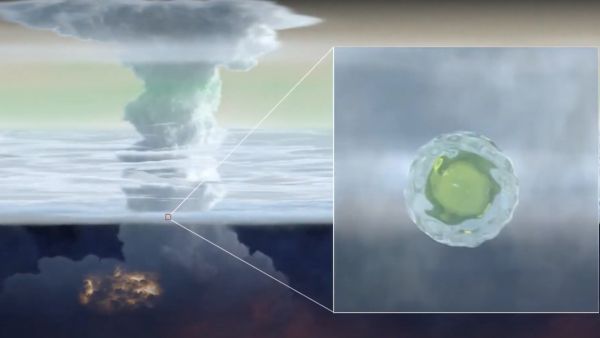When you buy through link on our site , we may earn an affiliate commission . Here ’s how it works .
Uranus smells likerotten eggs , and that is not a joke . A novel study finds that the seventh planet from the sun has an upper atmosphere flush with hydrogen sulfide .
Hydrogen sulfideis a gas well known for its repulsive smell ; the gas emanates from sewers and volcanoes on Earth , explaining why some spicy springs , which are fed by geothermally heated water system , smell like breakfast gone unfit . Astronomers have now discovered that the gas is plebeian in the cloud top of the inning of Uranus .

Methane in the atmosphere gives Uranus its blue hue, as seen in this image from the Keck telescope from 2004.
That hydrogen sulfide composition is different than what is launch in the upper standard pressure of Uranus ' fellow giant planet Jupiter and Saturn , where ammonia water dominates , pronounce Leigh Fletcher , a report carbon monoxide gas - author and aged research fellow in planetary science at the University of Leicester in England . Ammonia is made of nitrogen bonded with hydrogen , while H sulfide is H bonded with sulfur . [ 7 Everyday thing That materialize queerly in Space ]
" During oursolar system ’s formation , the equalizer betweennitrogenand sulfur ( and hence , ammonia and Uranus ' freshly discover atomic number 1 sulfide ) was square off by the temperature and the location of the planet ’s formation,“Fletcher say in a affirmation .
Faint signals
scientist have long debated the accurate physical composition of Uranus ' upper standard atmosphere , just because they lack instruments sensitive enough to detect the gasoline found there . For the unexampled study , the team used the Gemini North scope , a 26.5 - foot ( 8.1 meters ) telescope that sits on the Mauna Kea volcano in Hawaii . researcher used the scope ’s Near - Infrared Integral Field Spectrometer ( NFIS ) , first designed to image the outsides of mordant maw in far - off galaxies , to sample reflected sunlight from Uranus ' high atmosphere .
Thanks to that pawn ’s tremendous sensitivity , research worker were able to detect very faint lines on the light spectrum indicating that hydrogen sulphide had take over some wavelengths from the sunlight , the scientist said .
" Only a flyspeck amount [ of hydrogen sulfide ] remains above the clouds as a pure vapor , " Fletcher enjoin , and this made detection a challenge .

Nasty atmosphere
The determination will help clarify how Uranus and its neighboring ice giant , Neptune , formed , the research worker said . They reported their results April 23 in the journal Nature Astronomy . There is probable a more - concentrated reservoir of hydrogen sulfide beneath the cloud deck , the researchers said , but this in all probability lies beyond world - spring telescopes ' detection abilities .
However , the clouds on Uranus definitely contain chemical that a human could detect in individual , the researchers said .
" If an unfortunate human were to ever derive through Uranus ' clouds , they would be met with very unpleasant and odiferous conditions , " study co - author Patrick Irwin , a professor of planetary purgative at the University of Oxford , say in the command . That is , they would if that person miraculously lived to take a whiff .

" asphyxiation and exposure in the negative 200 point Anders Celsius [ minus 328 degree Fahrenheit ] ambiance made of mostly H , atomic number 2 and methane would take its bell long before the smell , " Irwin added .
in the first place published onLive Science .















